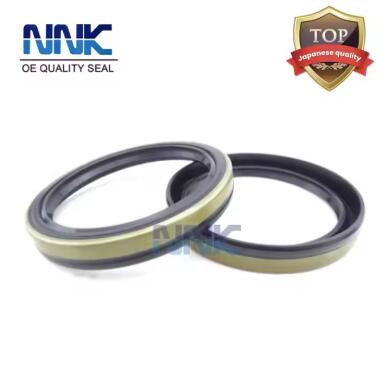What Is an Automotive Oil Seal and How Does It Work?
Nov. 21, 2024
Automotive oil seals are critical for maintaining engine efficiency by preventing leaks and protecting components. This article explains their purpose, functionality, and practical applications.
What Is an Automotive Oil Seal?
An automotive oil seal, also called a shaft seal, prevents oil leakage from engines and gearboxes while keeping contaminants out. It ensures efficient operation and protects key components from wear and tear.
How Does an Automotive Oil Seal Work?
The seal creates a barrier between rotating and stationary components. Its flexible lip presses against the shaft, preventing oil from escaping and blocking dirt and debris from entering.
Key Components of Automotive Oil Seals
| Component | Function |
|---|---|
| Outer Casing | Provides structural support and fits snugly into the housing. |
| Sealing Lip | Maintains contact with the shaft to prevent leaks. |
| Spring | Enhances the sealing lip's pressure for better performance. |
Types of Automotive Oil Seals
Rotary Seals: Used in rotating shafts, such as crankshafts and camshafts.
Static Seals: Designed for non-moving components.
Dynamic Seals: Handle applications with axial or radial motion.

Real-World Example
A logistics company faced frequent gearbox failures due to oil leaks. Switching to high-quality oil seals reduced maintenance costs by 30% and extended component lifespan, improving overall fleet reliability.
Benefits of Automotive Oil Seals
Prevent oil leaks, reducing waste and environmental harm.
Extend engine and gearbox life by blocking contaminants.
Further reading:
OEM Iron Casting Manufacturer vs. Traditional Foundries: Which Is Better?
Exporting Casting Pump Housing: Best Practices
Top Trends in Electronics Stamping Parts You Need to Know
How Can Radius Raised Rib Belts Improve Your Production Efficiency?
What are the Benefits of S-Shaped Clip Stamping?
Conveyor Guide Rail Clamps: China vs Global Options Explained
Conveyor Case Chain vs. Traditional Belts: Which Is Better?Enhance vehicle performance and fuel efficiency.
Common Signs of Oil Seal Failure
Visible oil leaks under the vehicle.
Unusual noises from the engine or gearbox.
Increased wear and tear on engine components.
FAQ
How often should oil seals be replaced?
Oil seals typically last 100,000-150,000 miles but should be inspected during routine maintenance.
What causes oil seals to fail?
Common causes include wear, improper installation, and exposure to extreme temperatures.
Are oil seals universal?
No, oil seals vary by size, material, and application. Always select a seal compatible with your vehicle.
Can I replace an oil seal myself?
While possible, replacing an oil seal requires technical skills and tools. Professional installation is recommended.
Conclusion
Automotive oil seals are essential for preventing leaks, protecting components, and enhancing vehicle efficiency. Regular inspection and timely replacement ensure long-lasting performance and reduce maintenance costs.
Further reading:Why are OEM Stainless Steel Castings Essential?
10 Essential Smt Feeder Parts You Need for Optimal Performance
Understanding Conveyor Mounting Brackets: Key Applications and Benefits
Valve Pump Body Casting Manufacturer A vs. B: Which Is Better?
How to Troubleshoot Samsung Smt Feeder Issues?
Effective Solutions for Conveyor Tightening Knobs
How to Choose Juki KE2070 Feeder Parts OEM?
655
0
0
All Comments (0)
Previous: How to Choose the Right Wheel Hub Oil Seal for Durability?
Next: None
Related Articles
If you are interested in sending in a Guest Blogger Submission,welcome to write for us!




Comments